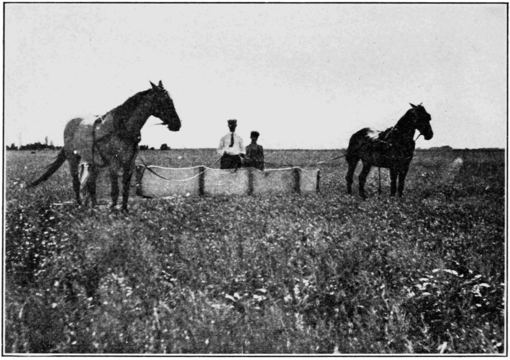does get some relief by the constant use of the old-time "hopper dozer," driving it back and forth over his fields while the grain is young. He may, if there is no hay crop at stake, and at some considerable risk to fences and buildings, burn over fields where myriads of young hoppers are a few days old, if such fields are burnable; and he may successfully, and with considerable profit to himself and family, protect his vegetable garden with a flock of grasshopper devouring turkeys. Yet none of the above measures is sufficient to obtain the results necessary to successfully meet existing conditions, none of them makes a sufficient impression upon the hordes of grain-devouring insects. The exigencies of the case prompted the writer to experiment with a poison spray (arsenite of soda) found successful in South Africa. Our legislature of 1910-11, influenced by the fact that these pests were on the increase, and that in 1910 the state lost almost or quite two thirds of its flax crop through the work of grasshoppers, granted a small appropriation for two years' work against this insect, under the direction of the state entomologist. With these funds available, we were enabled to employ four specialists in the field during the summer, to buy spraying outfits and spraying material, and to visit and personally help individual farmers asking aid.
The mental attitude of many of these citizens toward this work is interesting. In the first place, in the winter, an apathetic condition prevails; the lesser losses are forgotten, "Hope springs eternal," etc., but in the summer, too late for efficient work, our office is deluged with mail from the same farmers who, in the late fall and winter, expressed

